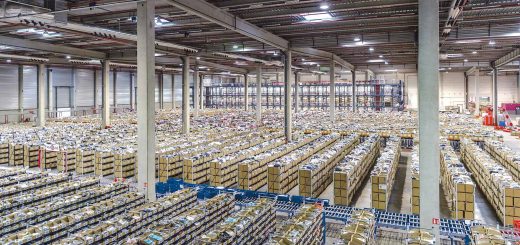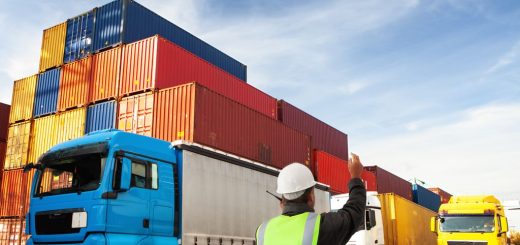Sea Freight Consolidation: Cost-Effective Solutions for Large Volume Chinese Imports
The Role and Advantages of Sea Freight Consolidation in Global Trade
Maritime transport serves as the backbone of global trade, carrying approximately 80% of international goods. Sea freight consolidation, which involves combining multiple smaller shipments into a single larger shipment, plays a crucial role in optimizing logistics efficiency and reducing costs. For businesses engaged in large volume imports from China, leveraging the advantages of sea freight consolidation is key to enhancing competitiveness in international trade.
- Cost-Effectiveness: Sea freight consolidation can significantly reduce shipping costs. By consolidating multiple shipments, businesses can benefit from economies of scale, enjoy lower freight rates, and minimize costs per unit of goods. For example, shipping a full container load (FCL) typically offers more favorable rates than shipping smaller, less-than-container load (LCL) shipments.
- Flexibility and Scalability: Sea freight consolidation provides businesses with greater flexibility and scalability. Whether it is a one-time large volume shipment or regular imports, businesses can adjust their shipping plans based on market demand and inventory levels. Consolidation services can accommodate shipments of varying sizes, meeting diverse business needs.
- Risk Mitigation: Consolidation reduces the risk of loss or damage to goods during transit. Professional freight forwarders manage the consolidation process, ensuring goods are properly stored and transported. This minimizes damage risks and enhances shipping reliability.
Steps and Strategies for Sea Freight Consolidation
Preparation Before Consolidation
- Supplier Selection and Audits: Use platforms like Alibaba to identify reputable Chinese suppliers. Evaluate their production scale, product quality, and pricing. Visit factories for on-site inspections to assess their production capabilities and quality control systems. Verify their credibility on relevant platforms and check their business licenses.
- Product Certification: Ensure products meet international safety, health, and environmental standards. Request certification documents from suppliers, such as ISO certifications and test reports.
- Customs Regulations: Familiarize yourself with customs regulations in the destination country. Verify whether the products fall under restricted or prohibited categories and prepare the necessary documentation for customs clearance.
Consolidation Process
- Prepare Import Contracts and Documentation: Draft detailed import contracts specifying product details, quality standards, delivery terms, and pricing. Ensure commercial invoices accurately reflect the product description, quantity, value, and other relevant information. Prepare a detailed packing list indicating the packaging type, number of packages, weight, and volume. Collect and organize supporting documents such as certificates of origin, quality inspection reports, and safety certifications.
- Choose a Freight Forwarder: Engage a professional freight forwarder experienced in shipping goods from China to Europe and North America. They can provide one-stop logistics services, including customs clearance, transportation, and warehousing, and assist with local customs regulations. For instance, Dimerco offers comprehensive consolidation services, enabling businesses to consolidate goods from multiple Chinese suppliers into a single international shipment, saving time and effort while reducing shipping costs.
Logistics and Customs Clearance Processes for Consolidation
- Customs Declaration and Inspection: Submit electronic customs declarations through the destination country’s customs system. The declaration must include accurate information such as the product name, specifications, value, and quantity. Customs authorities may inspect the goods, including verifying documentation and examining physical items. Importers should actively cooperate with customs inspections and promptly provide any requested information or documents. Ensure that goods meet destination country safety, health, and environmental standards and obtain mandatory certifications like CE.
- Select a Logistics Method: Choose a suitable logistics method based on factors such as shipping costs, delivery timelines, and cargo characteristics. Sea freight is the most common choice for large volume shipments, offering cost-effectiveness and reliability. Air freight is suitable for high-value or time-sensitive goods, while rail freight provides a balance of speed and cost-effectiveness.
Cost Management and Optimization for Consolidation
- Shipping Costs: Shipping costs depend on factors such as the weight, size, and distance of the shipment. Freight forwarders often provide quotes based on weight and shipping destination. For example, shipping a 20-foot container of goods from China to Europe may cost between EUR 3,000 and 5,000. Businesses can compare quotes from multiple shipping companies to select the most cost-effective option.
- Port Fees and Other Costs: In addition to basic shipping fees, businesses should also consider port fees, terminal handling charges, and other related costs. These fees vary by port and shipping company. Freight forwarders can provide detailed cost breakdowns to help businesses plan their budgets.
- Cost Control Strategies: Optimize packaging and labeling to reduce cargo volume and weight. Efficiently utilize container space to minimize the number of containers used. Additionally, businesses can negotiate favorable rates with freight forwarders by establishing long-term partnerships.
Tips for Efficient Sea Freight Consolidation
- Optimize Packaging and Labeling: Ensure goods are securely packaged to withstand long-distance transportation and prevent damage. Use clear and durable labels to indicate product information such as the manufacturer’s name, model, specifications, and origin. Proper labeling facilitates customs clearance and reduces detention risks.
- Monitor Logistics and Customs Status: Utilize logistics tracking tools provided by freight forwarders to monitor shipment status in real time. Maintain close communication with the shipping company and customs broker to promptly address any issues during customs clearance or transportation, ensuring timely delivery of goods to their destination.
- Leverage Local Warehousing and Distribution Services: Consider using local warehousing and distribution services in the destination country to store and distribute consolidated goods. This reduces logistics costs and improves delivery efficiency. Choose a warehouse provider with advanced management systems and logistics capabilities to ensure product safety and timely delivery.
Case Study: Successful Sea Freight Consolidation for a Large Volume Importer
A large volume importer of consumer electronics faced high shipping costs and complex logistics management when importing goods from China. By partnering with a professional freight forwarder and adopting efficient consolidation strategies, the importer achieved significant cost savings. The forwarder consolidated shipments from multiple Chinese suppliers into a single container, reducing shipping costs by 30% and improving delivery efficiency. The streamlined logistics process enhanced the importer’s competitiveness in the European and North American markets.
Conclusion
For businesses engaged in large volume imports from China, sea freight consolidation offers a cost-effective and efficient logistics solution. By selecting reliable freight forwarders, optimizing packaging and labeling, and leveraging local warehousing and distribution services, businesses can effectively reduce shipping costs and risks. This ensures smooth customs clearance and timely delivery of goods to their destination. With careful planning and execution, businesses can seize market opportunities and achieve sustainable growth.


